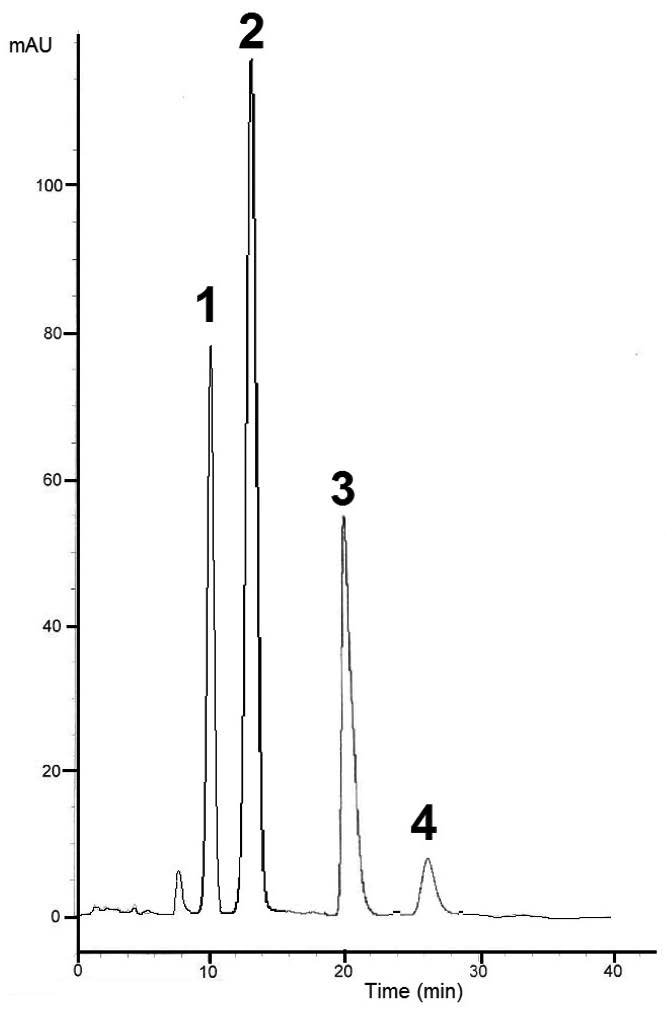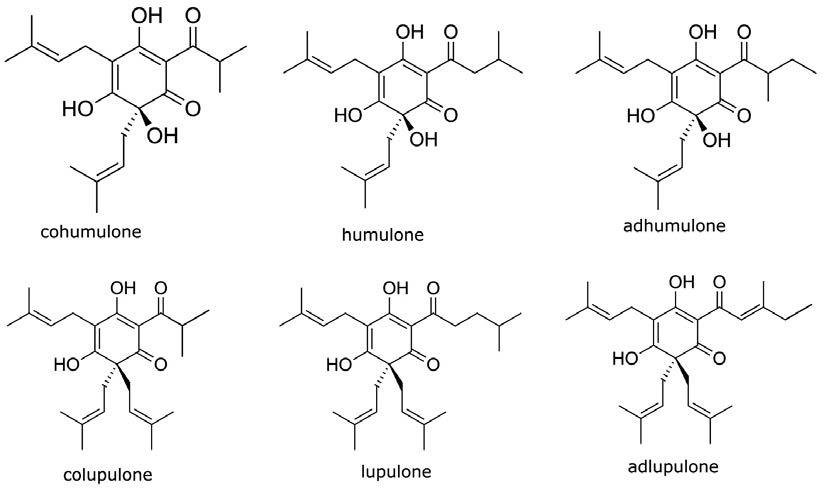Robust, Precise Method for Beer Analysis with HPLC
The effectiveness of this Method is evident from the fact that data obtained were in a good agreement with the literature values. This Method also has the added bonus of good Precision (%RSD =0.1 and below).
Calibration Curves for Alpha and Beta Acids in Beer showed good linearity (R2 = 0.9999).
Peaks:
1. Cohumulone
2. Humulone / Adhumulone
3. Colupulone
4. Lupulone / Adlupulone
Method Conditions
Column: Cogent Bidentate C18™, 4μm, 100Å
Catalog No.: 40018-75P
Dimensions: 4.6 x 75mm
Mobile Phase: 80:20 A: DI Water with 0.1% Formic Acid / B: Methanol
Injection vol.: 5μL
Flow rate: 0.5mL / minutes
Detection: UV @ 326nm
Sample Preparation:
—International Calibration Extract 3 (ICE-3), containing 44.65% Alpha Acids (Cohumulone – 13.88%, Humulone / Adhumulone – 30.76%) and 24.26% beta acids (Colupulone – 13.44%, Lupulone / Adlupulone 10.84%), was obtained from the American Society of Brewing Chemists.
—The sample was prepared by dissolving 0.1482g of ICE-3 standard in 50.00mL of the Mobile Phase. The solution was then filtered with a 0.45μm Nylon Syringe Filter (MicroSolv Tech Corp.).
—Samples for calibration curves were prepared and diluted 1:20. Final concentrations were 0.005–0.05mg / mL.
t0: 1.5 minutes
Note: Hops contain substances that are described as alpha and beta-acids, which are used to impart bitter flavor and aroma to beer. The bitterness of beer depends mainly on the concentration of alpha acids in the hops, so it is important to be able to determine their composition. In addition bittering acids found in beer may have positive effects on diabetes, forms of cancer, inflammation and weight loss, although this has not been proven yet.
Attachment
No 245 Analysis of Alpha and Beta-Acids in Hops with HPLC pdf 0.2 Mb Download File




